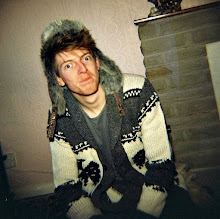Having been reading a part of "Planet of Slums"
Mike Davis (2006) London:Verso, I have come accros a couple of thinkers who have writen about the concept of non-space in a loose way. They focus on the concept of urbanization and the effects of modernization on population distribution and urban growth. For the first time in history more of the worlds population lives in urban areas than rural ones, this has lead to the rapid development of cities, particularly in south east asia, sub-saharan west africa and south and central america. This in turn has led to the rise of shanties and slums and the idea of
Zwischenstadt which I will come back to shortly.
First off te antropologist and sociologist Gregory Guldin speaks about the conseptualization of urbanization as "structural transformation along and intensified interaction between, every part of an urban-rural continuum". This "urban-rural continuum" is basicaly speaking the areas between cities and more specificaly in areas of multiple magalopolises (cities with populatons or more than a million) where rural areas have been absorbed into semi-urban, sub-urban or slum effectivly.
Zwischenstadt is a concept along the same lines from the German anthropologist and architect Thomas Sieverts. Where as Guldin envisages his urban-rural spaces in a fairly traditionaly centred settlements along set transport lines, Sieverts cnceptualises them more as non-traditional settements with no clear or set centre. This theory obviously lends itself more to shanty towns and in some ways is a much more modern concept.
These urban-rural continuums or areas of
Zwischenstadt could be thought of as non-space in some respects, particularly if you are looking at it from Auge's view point as thy do not in many ways meet his deffinition of place. However ethicaly speaking and I supose personaly speaking these areas, particularly shantys, are more cultural interesting than sub-urbia, however I supose that is largly subjective.
 (sourced from archithings.com)
(sourced from archithings.com) (sourced from studylanguages.org)
(sourced from studylanguages.org)



















